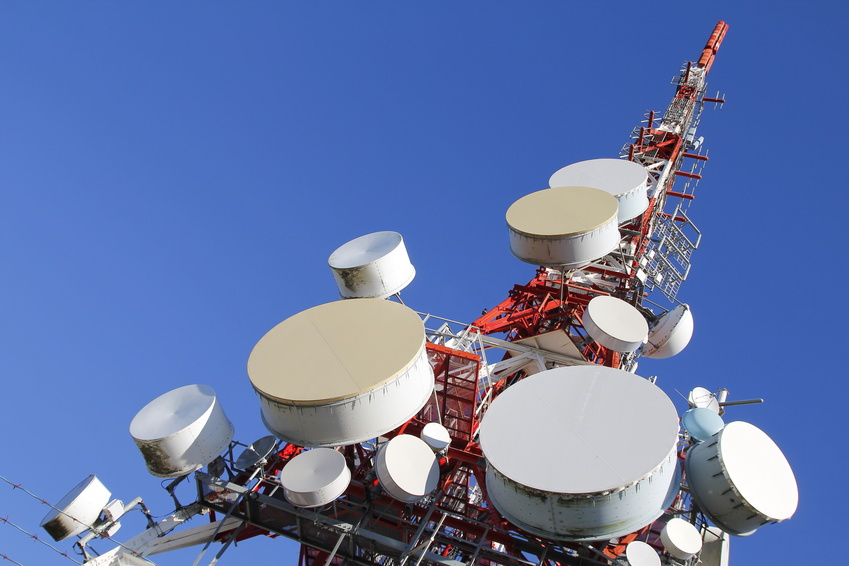There is much riding on Nigeria’s auction of the 2.6GHz 4G band. We say the probability for disappointment in the returns from this auction is high – but this is not merely a matter of value.
The 2.6 GHz auction is the first major, public test of investor sentiment in the country’s telecoms sector over the past few months. This is a difficult period for the entire Nigerian economy, but it is particularly complicated for the telecoms sector. Fuel shortages have made operating conditions tougher; economic growth has slowed markedly; the IMF projects real GDP growth of 2.3% this year, down from 2.8% in 2015 and 6.2% in 2014. Foreign exchange restrictions have hit especially hard, making it difficult to import foreign telecoms equipment and raise foreign capital as financial markets adopt a wait-and-see approach towards Nigeria and anticipate naira devaluation. Add to that concerns of regulatory heavy-handedness following the record $2.5bn fine levied on MTN Nigeria for failure to disconnect SIM cards and stakeholders have been cautious at best.
The 2.6GHz auction is expected to alleviate some of this angst, and offer the opportunity to participate in a Nigerian mobile connectivity and digital services market that remains unquestionably promising. We currently estimate it at around $2bn a year, with the potential of at least doubling in size within the next five years. The NCC hopes to generate at least $224m through the sale of 14 lots of 10MHz, at a reserve price of $16m per lot.
And yet, we find the probability for disappointment in the returns from this auction to be fairly high. It’s not a matter of value. Our assessment of 4G spectrum prices in Africa suggests that on a benchmark basis, the reserve price set by the NCC, if anything, slightly undervalues this spectrum asset. Indeed, we estimate the median value of Nigeria’s 2.6GHz band, if sold under optimal conditions, at around $20m for a 2x5MHz lot, around 25% above the suggested reserve price.
We see the problem elsewhere, in the very nature of the 2.6GHz band and the structural setup of the auction. We highlight a few points:
• The minimum investment threshold is too high – the NCC is asking for a minimum investment of $64m for 40 MHz. Few operators can come up with and/or justify this amount for this type of investment at this time, and for this particular asset. By comparison, Morocco sold 20 MHz and Ghana 30 MHz in their respective 4G processes; Cote-d’Ivoire sold 40 MHz, but as part of a broader mix of frequencies including 2G and 3G, which raised overall value.
• Further, we believe the sale of the 2.6GHz on a stand-alone basis drags down the intrinsic value of this offering. The 2.6GHz band is best used as high-density, urban area complement to lower-band spectrum. Sold alone, it loses some of its attractiveness. In the majority of African 4G transactions in which 2.6GHz was offered, it was typically auctioned as part of a mix of 4G frequencies including the lower-band 700MHz or 800MHz. Few other markets -outside of Ghana’s narrow fixed wireless access (FWA) process of 2011- have sold 2.6GHz on a stand-alone basis. By selling 2.6GHz on a stand-alone basis, Nigeria is in effect selling 4G spectrum at FWA conditions.
• An operator purchasing the 2.6GHz would have no first-mover advantage in Nigeria. In nearly all other cases of 4G licensing in Africa, the players acquiring the spectrum are the first to roll out the services at scale. By contrast, Nigeria already has 5 LTE players (using 800MHz or 2300 MHz), at least 4 of which are specifically targeting the high-density urban areas that the new owner of the 2.6GHz band would presumably target. And nearly all these other players acquired their licences at a value point 3 times lower than the requested reserve price.
This all makes for interesting dynamics around the auction. The one company that could potentially afford the band, MTN Nigeria, doesn’t really have to have it. MTN Nigeria acquired Visafone primarily for its sought-after 800MHz spectrum and has announced it will launch LTE in July 2016. Acquiring the 2.6GHz would still be useful, but arguably not enough to overbid.
Other GSM operators in need of 4G spectrum will have to assess whether this is the best use of capital, an equation complicated by the lack of visibility on the availability of the preferred 700MHz band. An operator without the lower band option would be (and indeed, should be) hesitant to invest in the 2.6GHz even at the suggested reserve price, only to be limited to high-density areas where competition is the fiercest.
In this case, the driving rationale for an investment would be not to be left behind – but the 2.6GHz is really only a small step while waiting for the real (and more expensive) prize, the 700 MHz or 800 MHz band. The question is therefore how aggressive to be on 2.6GHz when this is not the most critical piece to have. And indeed, an argument can be made that an aggressive bid for Smile Nigeria or Intercellular (who hold the last remaining 800MHz chunks) would be more sensible than a strong play for 2.6 GHz spectrum – though one does not exclude the other.
For the Nigerian government, the real proceeds are not in the 2.6GHz auction in our view. They are in finding a way to bring the 700 MHz or whatever might be left of the 800 MHz to market as soon as possible.

